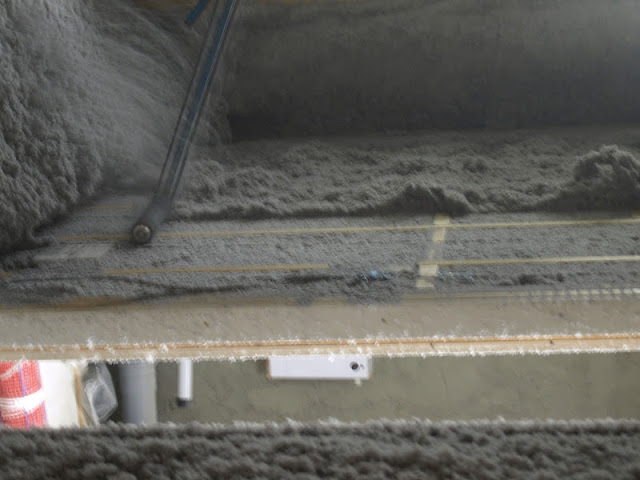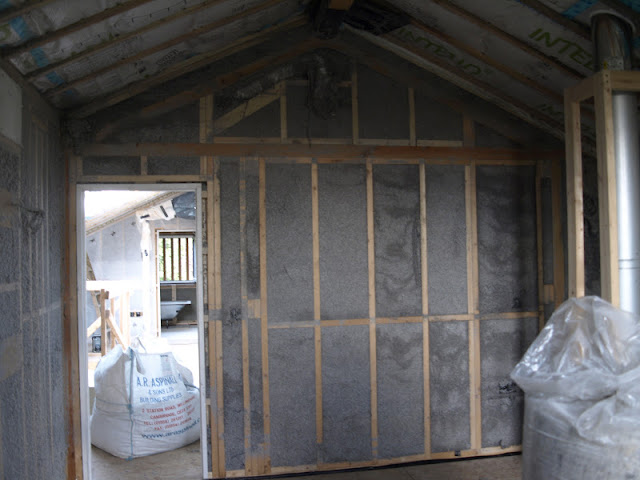Monday, 18 June 2012
It was the first day of the putting in the Warmcel (recycled newspaper) insulation today into the internal timber studwork walls and also part of the first floor. It was sprayed in using two different methods - open spraying (on the left of the image) and meshed (on the right), where they stapled up a fabric scrim first and then sprayed into the void created.
The insulation is sprayed using different size hoses - a smaller one where it is being injected into a contained void and a larger one when it is being open sprayed.
To start with the walls were open sprayed - this picture is a bit blurry as it was very hard to take a good picture because of all the dust...
...which just filled up the room! Literally everything got covered in a film of newspaper dust. (I am very glad that we taped over the electrical back boxes!)
At the end it looked like this.
You can see the amount of insulation on the floor banked up against the wall.
The insulation then gets flattened off and the overspray and dust tidied up - this takes nearly as long as applying it!
Completed walls using the open sprayed method - they look neat but were incredibly dusty to do. We were told that there was no time limit on how long we could leave the insulation exposed as we were concerned it might fall out of the wall. When they spray it, it is slightly damp so it holds together better and we were worried that when it dried it might fall out of the wall. Whilst it doesn't fall out of the wall as such, if there is a lot of air movement across the surface of it then it does tend to blow out gradually.
In contrast, the meshed walls have a fabric scrim stapled up first as seen here. Holes are made in the mesh in each 'bay' of the wall, for example above and below every noggin and between all the studs. The hose is then inserted into the hole and the void filled up. There is virtually no mess! A definite plus compared to the open spray method in my opinion!
Its is worth noting that where we have the thicker walls, the people installing it found it easier to mesh and fill the entire void. So in places the insulation is about 300mm thick.
Subscribe to:
Post Comments (Atom)










1 comment:
No more posts? How is it going??
I'm keen to see your progress....
Post a Comment